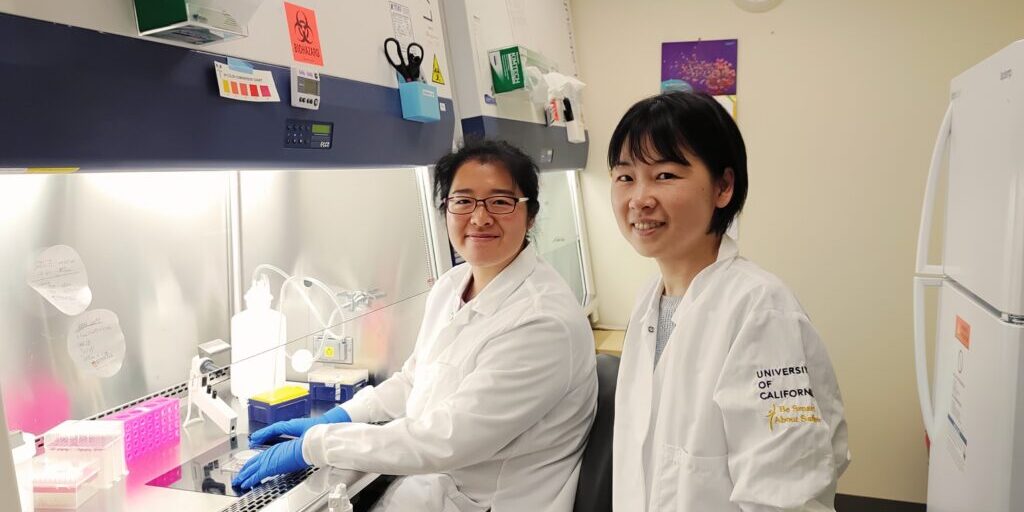Modeling Fragile X Syndrome using Multi-Region Human Brain Organoids

Momoko Watanabe, PhD
Principal Investigator
Yuan-Chen Tsai, PhD
FRAXA Postdoctoral Fellow
University of California at Irvine
Irvine, CA
2023-2024 Grant Funding: $100,000
Summary
Organoids are tiny, self-organized, 3-dimensional tissue cultures grown from stem cells. They can be crafted to model much of the complexity of any organ — even the brain. Using organoids, researchers have already found genes whose activity was altered in human Fragile X organoids, but not Fragile X model mice.
This team is working to build new organoids which more closely model brain function in Fragile X syndrome, both to understand the disorder and to provide a powerful platform for testing potential treatments.
The Science
By Momoko Watanabe, PhD and Yuan-Chen Tsai, PhD
Stem cell technology has evolved from two-dimensional cell culture to three-dimensional organoid culture. More cell types and sophisticated cell-to-cell connectivity can be found in organoids. To date, brain organoids can closely mimic molecular signatures, cell types, and tissue organization of the human fetal brain.
Cerebral organoids generated from human pluripotent stem cells have emerged as a promising in vitro modeling system for brain disorders including Fragile X syndrome (FXS). However, current organoid models suffer from very low numbers of inhibitory interneurons, which are crucial for the maintenance of excitation-inhibition balance in the brain. This balance is disrupted in FXS, and it would be difficult to study this phenomenon if the neural circuit cannot be properly formed.
With this grant, we will develop an improved Fragile X syndrome brain organoid model which includes control organoids with a higher number of interneurons, more typical of a healthy human brain. To create such organoids, we propose fusing the cortical organoids (Cx) and ganglionic eminence organoids (GE), the birthplace of inhibitory interneurons. This fusion organoid system will allow us to study neural network hyperexcitability and the role of inhibitory interneurons in FXS, with the potential to serve as a drug-testing platform.
We anticipate the results to significantly advance the current understanding of Fragile X syndrome neural hyperexcitability and inhibitory interneuron pathology and provide a platform for preclinical drug screening.

